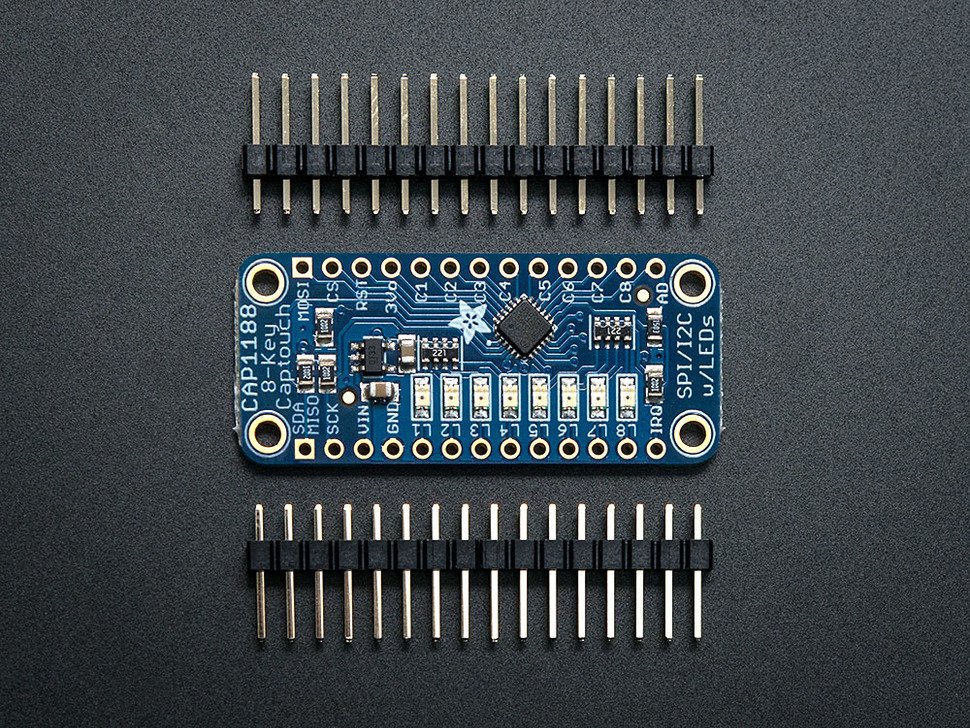Capacitive Touch Sensor CAP1188 8 Key Breakout I2C or SPI
Capacitive Touch Sensor CAP1188 8 Key Breakout I2C or SPI - Add lots of touch sensors to your next microcontroller project with this easy-to-use 8-channel capacitive touch sensor breakout board, starring the CAP1188. This chip can handle up to 8 individual touch pads, and has a very nice feature that makes it stand out for us: it will light up the 8 onboard LEDs when the matching touch sensor fires to help you debug your sensor setup.
The CAP1188 has support for both I2C and SPI, so it easy to use with any microcontroller. If you are using I2C, you can select one of 5 addresses, for a total of 40 capacitive touch pads on one I2C 2-wire bus. Using this chip is a lot easier than doing the capacitive sensing with analog inputs: it handles all the filtering for you and can be configured for more/less sensitivity.
Comes with a fully assembled board, and a stick of 0.1" header so you can plug it into a breadboard. For contacts, we suggest using copper foil, then solder a wire that connects from the foil pad to the breakout.
Getting started is a breeze with our Arduino library and tutorial. You'll be up and running in a few minutes, and if you are using another microcontroller, its easy to port our code.
Capacitive Touch Sensor CAP1188 8 Key Breakout I2C or SPI
This chip, which can manage up to 8 different touch pads, has a very useful function that makes it stand out in our opinion: it will turn on the chip's 8 internal LEDs when the correct touch sensor fires, making it easier to troubleshoot your sensor configuration. The CAP1188 is simple to use with any microcontroller since it supports both I2C and SPI.
What does a capacitive touch sensor do?
A conductive object's presence causes a change in the capacitor, a system's capacity to store an electric charge, within its projected field, which is measured using capacitive sensing technology. Normally, such an object is a human finger, but it might also be any conductive object with a different dielectric than air.
What is a capacitive touch key?
Both a cap touch and a capacitive touch can be used to describe it. Cap touch has the potential to take the role of mechanical buttons. Relatively speaking to cap touch, mechanical buttons are often relatively thick. Cap touch is particularly thin and flexible since it can be produced by screen printing conductive inks.
What is the most common use of capacitive sensors?
Sensors used to monitor or detect contact, position or displacement, humidity, fluid level, and acceleration are among the main uses. Sensor touchscreens are used as input devices in digital music players, mobile phones, and tablet computers. Mechanical buttons may also be replaced by capacitive sensors.
TECHNICAL DETAILS
- Dimensions: 42mm x 18mm (1.6" x 0.7")
- Weight: 2.5g
Capacitive Touch Sensor CAP1188 8 Key Breakout I2C or SPI
Capacitive Touch Sensor CAP1188 8 Key Breakout I2C or SPI
Low stock: 5 left
Product Code
SKU:1602
Couldn't load pickup availability




